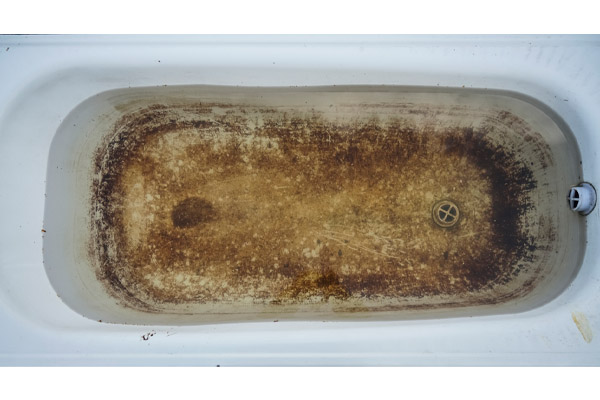In this article on the next paragraphs you might get more worthwhile information concerning Why is Sewage Backing Up Into My Bathtub?.

Sewer backup in the tub can be a distressing and unsanitary trouble for any type of property owner. Not only is it troublesome, yet it likewise presents serious wellness threats and indicates underlying problems with the plumbing system. Recognizing why sewage is coming up with the tub is essential for taking proper action to attend to the issue properly.
Intro to the Concern
Typical Factors for Sewer Back-up
Obstructions in the Sewer Line
One of the most usual reasons for sewer backup is a blockage in the sewage system line. This can happen because of the build-up of particles, grease, or foreign things in the pipelines, stopping correct flow and causing sewer to support right into your bath tub.
Tree Root Invasion
Tree roots seeking moisture and nutrients can penetrate drain lines with small splits or joints. Gradually, these origins can expand and increase, creating substantial damage to the pipes and causing sewer backup concerns.
Comprehending the Trouble
When sewage draws back up into the tub, it's a clear sign of a problem with the drain system. The wastewater that should be streaming far from your home is rather finding its way back into your living space, which can result in significant damages and health hazards.
Possible Reasons
Numerous factors can add to sewer backup in the bath tub. From blockages in the drain line to problems with the plumbing facilities, identifying the source is vital for locating an option.
Aging Framework
Older homes might have obsoleted plumbing systems that are more prone to rust, fractures, and deterioration. As pipelines age, they become more vulnerable to leaks and blockages, increasing the likelihood of sewer backup events.
Heavy Rainfall or Flooding
Throughout periods of heavy rainfall or flooding, the drain system might end up being overloaded with excess water, causing backups and overflows. This can lead to sewer backing up right into bath tubs and other components inside the home.
Signs of Sewage Backup
Foul Odors
Unpleasant odors rising from drains pipes or components, especially in the bathroom, may suggest sewage backup concerns. These smells are commonly solid and relentless, signaling a problem that requires instant focus.
Slow Draining Fixtures
Tubs, sinks, and bathrooms that drain pipes gradually or not in any way could be experiencing sewage back-up. If several fixtures are influenced concurrently, it's likely that the concern originates from an usual point, such as the major drain line.
Gurgling Sounds
Odd gurgling or gurgling noises coming from drains pipes when water is running in other places in your home are a measure of air trapped in the plumbing system. This air accumulation can arise from sewage backup and should be investigated promptly.
Wellness Risks Associated with Sewage Backup
Contamination of Water
Sewer back-up can infect the water supply in your house, posing a major health and wellness danger to you and your household. Exposure to infected water can bring about intestinal problems, skin infections, and various other illnesses.
Mold and mildew Development
Wetness from sewage backup can create excellent problems for mold development in your home. Mold and mildew spores can worsen respiratory system issues and cause allergies in delicate people, making prompt clean-up important.
Spread of Disease
Sewage has unsafe microorganisms, viruses, and bloodsuckers that can create a range of illness, including hepatitis, cholera, and gastroenteritis. Entering contact with sewer or contaminated surfaces places you in jeopardy of infection.
Tidying up After Sewage Backup
Sanitation Procedures
Completely sanitize and disinfect impacted locations after sewage back-up to eliminate damaging microorganisms and protect against mold growth. Use ideal cleaning items and safety gear to guarantee secure and effective clean-up.
Remediation of Influenced Locations
Fix any kind of damage to floor covering, wall surfaces, or components caused by sewage back-up. Depending upon the level of the damages, you may require to replace carpeting, drywall, or other materials to recover your home to its pre-loss problem.
Immediate Actions to Take
Switching Off Water Supply
In case of sewage back-up, it's important to turn off the supply of water to prevent more contamination and damage. Situate the main water shutoff valve in your home and closed it off till the problem can be fixed.
Calling a Professional Plumber
Dealing with sewer back-up is not a do it yourself work. Contact a certified plumber with experience in dealing with sewage-related concerns to examine the situation and do essential repair work or clean-ups.
Staying Clear Of Contact with Infected Water
Till the sewer backup is resolved, prevent contact with infected water to stop the spread of microorganisms and virus. Use safety gear if you need to remain in the affected location and wash your hands thoroughly later.
Preventive Measures
Regular Upkeep of Sewer Lines
Set up regular inspections and maintenance of your sewage system lines to determine and address possible concerns prior to they escalate into major issues. This can consist of cleaning out debris, inspecting for tree root invasion, and repairing any type of damaged pipes.
Setting Up Bayou Valves
Consider mounting backwater valves in your plumbing system to stop sewer from receding into your home during durations of heavy rainfall or flooding. These valves instantly close when water starts backing up, shielding your building from contamination.
Proper Disposal of Household Waste
Prevent flushing anything apart from bathroom tissue and human waste down the bathroom to stop obstructions and clogs in the drain line. Dispose of grease, oil, and various other family chemicals correctly to minimize the risk of plumbing troubles.
Why Is Water Backing Up in My Bathtub When I Flush My Toilet?
What to do about a sewer line clog
First, don’t bother with plunging. No amount of plunging will dislodge the clog in a sewer line. The clog is too far away. Plungers are for clogs in the toilet itself, not the sewer line. Plus, the most likely causes of a sewer clog are:
Tree roots Flushed toys or feminine products Grease buildup Those items don’t move easily. And in the case of tree roots, the roots need to be cut out of the pipe and the pipe will need to be repaired.
You’ll need a closet auger. A closet auger is a type of plumber’s snake with a protective cover to keep from scratching the delicate porcelain toilet. If the clog is further down, you may need to remove the toilet or use one of your cleanouts to get to the clog.
We also recommend doing a video inspection of the drain to ensure that the cause of the clog has been completely removed. Otherwise, you could have the same problem again in a few days or weeks.
https://mspplumbingheatingair.com/blog/why-is-water-backing-up-in-my-bathtub-when-i-flush-my-toilet

I am just very curious about What to Do if Sewage Starts Coming Up Through Your Bathtub and I am praying you enjoyed reading the new blog post. Appreciated our piece of writing? Please quickly share it. Help someone else check it out. Thank-you for taking the time to read it.
Go Company